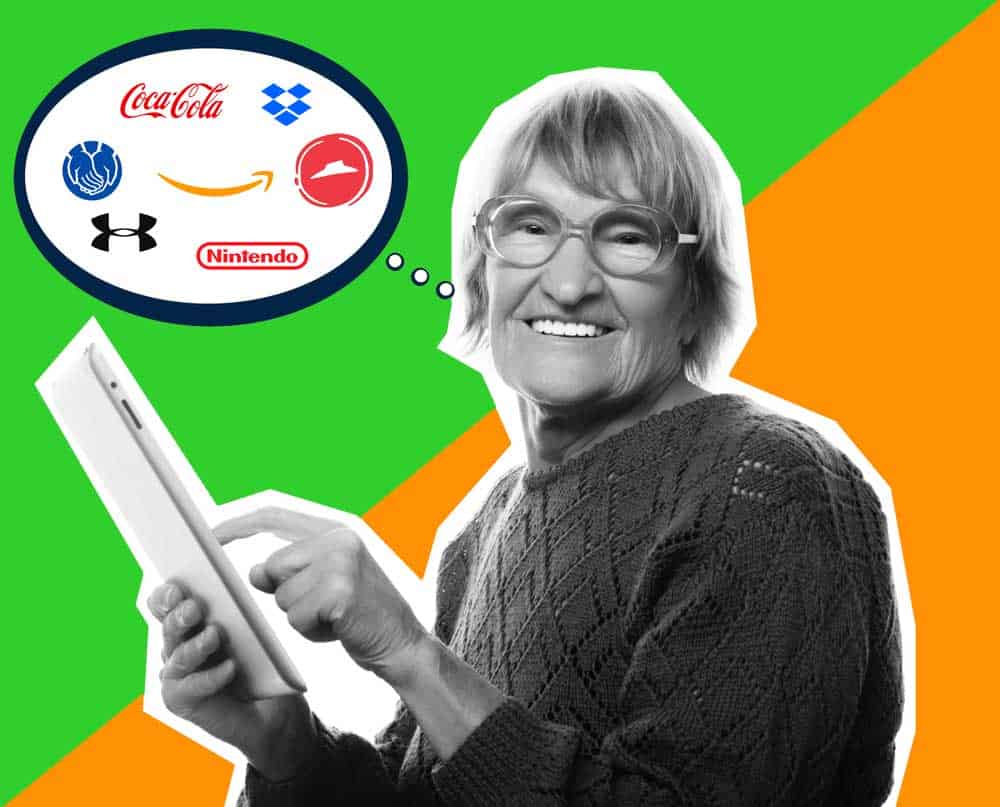How To Sell Sponsored Content To Brands (aka Branded Content)
Publishers who have been in the digital publishing game for over a decade are typically experts at creating content and knowing their audience. That expertise within such a narrow field can occasionally give publishers blinders to emerging opportunities to grow revenue and capitalize on growing advertising models, like sponsored content.
Tyler Benedict, the founder of Bikerumor.com, started his digital publishing journey in 2008. He focused on creating tons of content that his target audience desired that he felt existed no place else on the web. While his site grew, he considered himself late to the party when utilizing paid and sponsored content. However, it wasn’t until he actually started selling sponsored content to brands that he realized that most publishers and — and brands — were missing out on how valuable sponsored content could really be for everyone.
Today, I’m going to take you through how to sell sponsored content for brands using information that Tyler Benedict of Bikerumor.com’s shared at Pubtelligence San Francisco 2019 (click here for YouTube Playlist of the full event).
What is sponsored content for digital publishers?
Sponsored content noun
Sponsored content is material in an online publication which resembles the publication’s editorial content but is paid for by an advertiser and intended to promote the advertiser’s product or point of view.
Often sponsored content will be compared to the native display form of “sponsored content” that is associated with article referral ads (people also read types of ads), so the advertorial or sponsored article form of sponsored content is often referred to as branded content in the advertising industry now.
While the above definition is accurate, it doesn’t fully capture how sponsored content, or “branded content”, has evolved in the online publishing ecosystem over the past few years.
Sponsored content has been around for decades, and it started in print publications. But since the emergence of digital content, the way that brands have integrated sponsored content into television shows, digital articles, podcasts, and YouTube have evolved immensely.
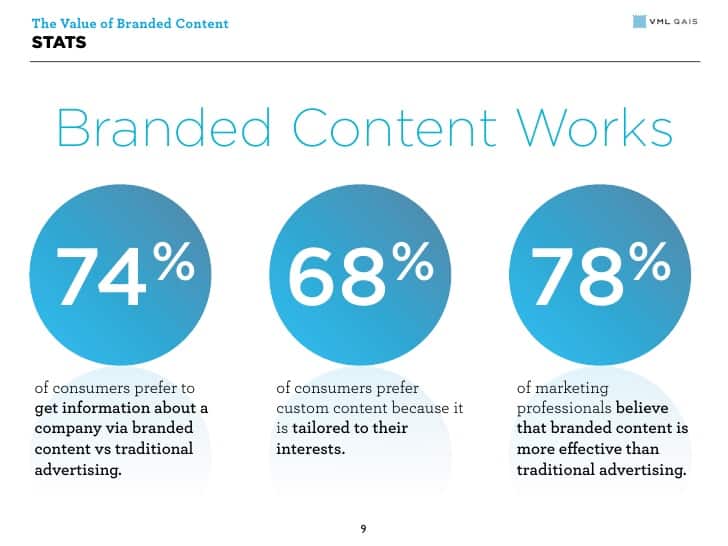
eMarketer’s statistics show that U.S. advertisers will increase their investments in branded content adverting this year. In part, because it is universally viewed by the majority of marketers as more effective than typical display or native advertising.
With such an expected increase in digital branded content spending, digital publishers might wonder how to best capitalize on that trend. Especially when they hear that publications like The Atlantic’s sponsored content drove 60% of their ad revenue, and has proven to have better ROI than other ad formats.
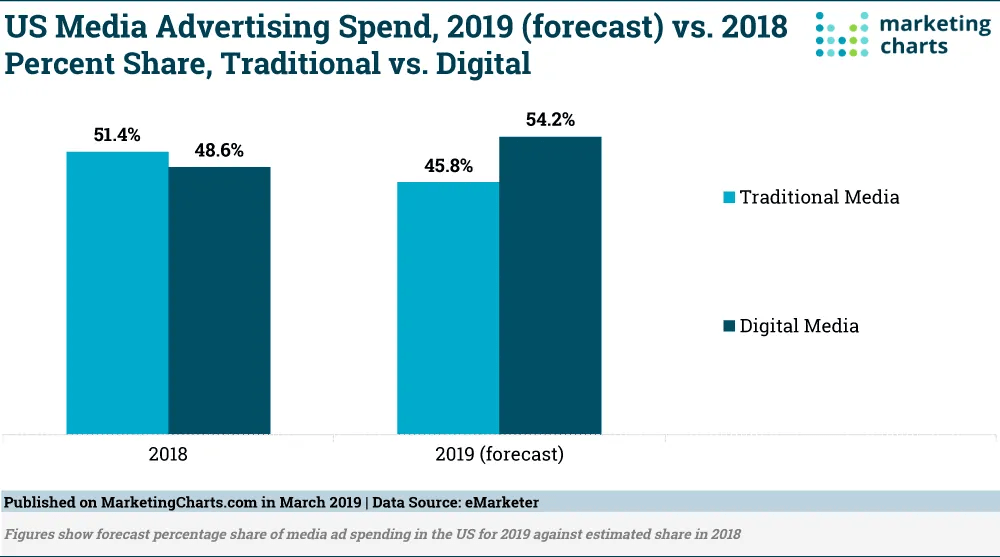
What’s an example of successful sponsored content?

A recent creative example of sponsored content in July of 2019 was Baskin Robbins and Netflix made a spy game for Stranger Things Season 3 that uses only 1985 tech called “Operation Scoop Snoop.”
Baskin Robbins and Netflix seem like unlikely collaborators, right? Not quite. Season 3 of the hit series garnered a whopping 40.7 million viewers within the first four days of the premiere. In this season of Stranger Things, characters Robin and Steve work at an ice cream shop called Scoops Ahoy.

David Nagel, senior director of consumer engagement at Baskin-Robbins, said Netflix originally reached out to the ice cream brand in April 2018 to see if they wanted to collaborate on a promotion for the season. They discussed the potential of special ice cream flavors but then realized it could do more. That then led to also transforming the Baskin-Robbins location in Burbank, California, into a Scoops Ahoy store from the show. —Adweek
But the real hit came from Baskin-Robbins and its agency partners 22squared, who sponsored the creation of Operation Scoop Snoop.
The catch is that players can only play it with 1985 technology—aka TelNet—a precursor to the internet. New material continues to be released every 24 hours with no end in sight until a player cracks the code. There are brand tie-ins with Baskin-Robbins, but they are intentionally subtle.
While these are both massive brands collaborating, the creativity behind the sponsored content can serve as a reminder as a publisher to keep your options open to the types of brands you work with.
Making branded content that doesn’t suck
One of the most significant downsides to sponsored or branded content is that it can be deceiving to your audience. When sponsored content is placed natively within a digital publication, social media platform, or any other medium, it can sometimes confuse visitors into thinking the sponsored content is part of the real content.
When BikeRumor was beginning to consider sponsored content, the types of sponsored content they saw within print advertising were incongruent with their brand and frankly not the right fit.
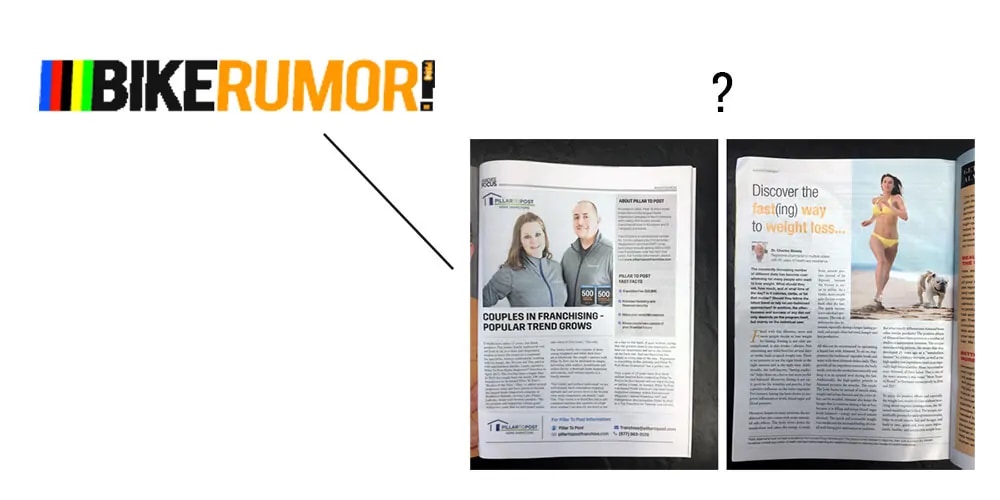
Why BikeRumor was so hesitant to get involved with sponsored content was that some of their competitors in the cycling space were putting all kinds of advertorials on their websites and getting hammered by their visitors who disliked them.
Mainly, the sponsored content was unsuitable for these niches’ audiences, and some were blatant advertising masquerading as an article
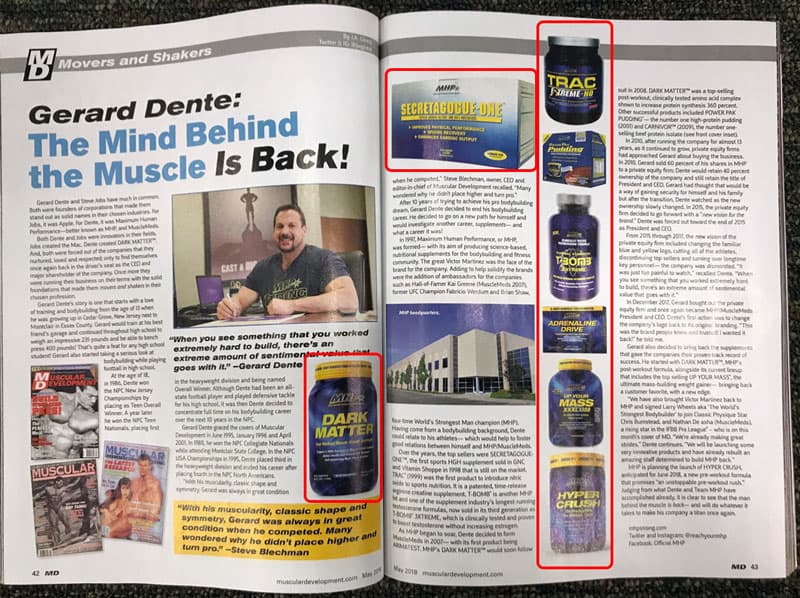
Nowhere in the above article does it mention this is an ad for this specific brand of performance supplements. The brand is littered throughout the content, and nowhere does it provide a disclaimer that the article is sponsored content.
For sponsored or “native” advertising, the FTC gives disclosure tips and considerations to be transparent as possible with your audience. Communicating in clear, unambiguous language that is as close as possible to the ads they relate to. They recommend terms such as:
- “Advertisement”
- “Ad”
- “Paid Advertisement”
- Sponsored Advertising Content”
- “Promoted” or “Presented by” should be avoided because they can be misleading.
How to offer sponsored content that brands & readers both want…
Sponsored content tends to perform better than traditional ads, with a click-through-rate of 8.8 times higher than with typical display ads; according to industry research. Why is this?
Consumers might be interacting with sponsored content more often because it’s more personalized, perceived as higher-quality, or crafted in a way that doesn’t feel like a sales pitch. A Reuters survey found that 75% of consumers say if content piqued their interest, they will engage with it—even if it’s sponsored content.
Popular movie trailers are often viewed millions of times organically, applauded when they are released, and shared across dozens of social networks. Yet, they are essentially an advertisement. The thing is, they are advertising something people want to see… to the people that want to see it.
Movies are a great example because they have mass appeal. Bicycle parts and gear don’t have the same kind of inherent entertainment appeal, but there are some people that totally geek out on that stuff and BikeRumor knew that those people were their audience.
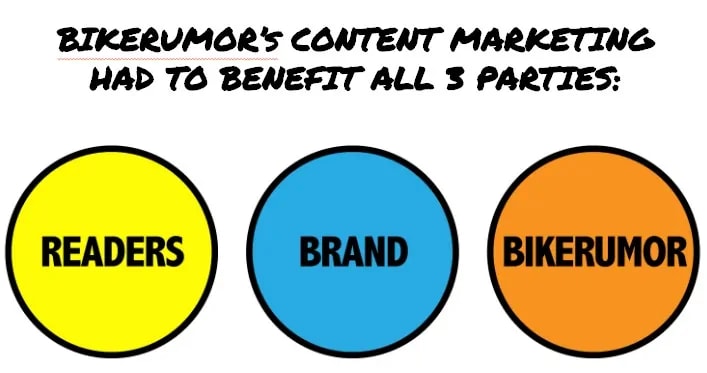
BikeRumor realized they couldn’t copy the framework of other sponsored content in the cycling space. There were plenty of other examples of sponsored content that they disliked, so they created a three-pronged Litmus test for the sponsored content they began building.
Readers: If you don’t have your audience, you have nothing. If anything, you might lose readers if you put out bad branded or sponsored content.
Brand: If it’s not benefitting the brand, they won’t pay you. You have to give them something they want.
BikeRumor: You, the publisher, make money.
Outside of just making money as a publisher, if you can please these three parties and make useful sponsored content, you build brand authority, credibility with your readers, and you can be involved in creative projects that actually can be enjoyable.
Examples of sponsored articles that readers and brands want
What’s great about these examples is that if they are formulaic, they can be used and reused indefinitely within your content strategy. They also have the added benefit of satisfying those three significant parties to remember: readers, the brand, and you, the publisher.
1. Reader survey contests
This type of sponsored content can be used with any potential brands and fits almost any niche audience.
The brand will sponsor the content, and they will offer something of value in return. They send the publisher 3-4 questions that they want to ask our readers. The reader has to answer the questions (typically multiple choice), and they have to enter their email addressed to participate in the contest.
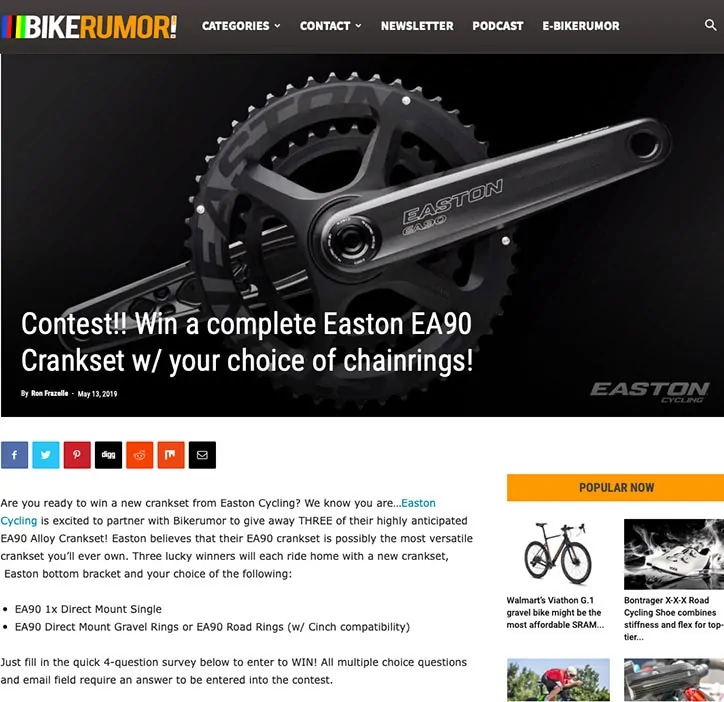
How to do it yourself: Create a long list of potential survey ideas that may be interesting or engaging to your audience. Access a tool, like Google Forms (free) or Gleam (paid), that you could use to capture data. Then, associate different ideas with a list of brands and begin conducting outreach.
- The reader’s value: They receive the chance to win a prize.
- The brand’s value: Receives the cheapest market research they can find. They get to discover what an audience thinks about the specific questions they want them to answer. The brand comes up with the questions, and they also get the readers’ email addresses that they can put into their marketing lists.
- The publisher: Get’s paid and is able to create a balance with advertisers and readers.
2. Ask a brand a question
With this type of sponsored content, the roles are reversed. Think about it from the perspective of the value gained by the reader.
Let’s say you’re a web visitor who frequents sites within the running shoe niche. Could you imagine if one of those websites gave you access to ask a question to Nike, Saucony, or Asics?
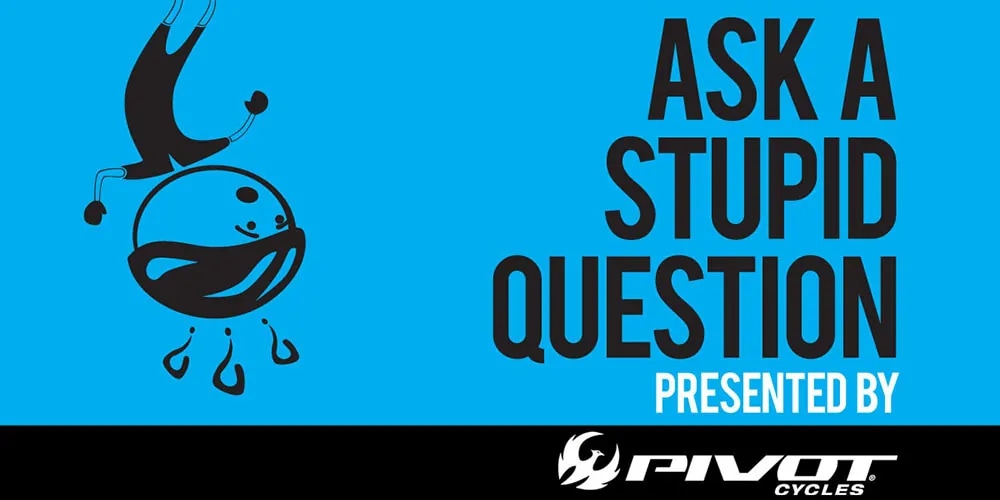
BikeRumor did this with their “Ask A Stupid Question” series that has since become a coveted spot for advertisers. Meanwhile, it is very widely enjoyed by the audience. It was the ultimate win-win. BuikeRumor is getting paid to publish content that readers want and enjoy.
The advertisers are happy to pay because they are simply getting a unique forum to educate their audience that is very hard to get elsewhere.
How to do it yourself: Create a series that your audience might enjoy, even it is only small at first. Get a brand or expert to volunteer to participate for free to build the premise. Then, once you’re able to create a segment or idea that your audience engages with, begin reaching out to brands with the proof and the “product”.
- The reader’s value: Gets to ask a brand any question on their products, technology, the company, the employment, etc.
- The brand’s value: The brand gets to understand what its customers want to know, this can help inform future marketing campaigns. Also, because they are answering questions on a particular subject matter, they are viewed as an expert in that topic. This type of sponsored content increases their brand authority in the space.
- The publisher: Gets paid to publish content that aligns with what readers want.
3. A branded blog series
For Bikerumor, they do a “tech” blog series. This series includes tire tech, suspension tech, or any “tech” within the cycling space.
These blog series center around a specific topic that has the potential to allow a brand to step in and sponsor content.
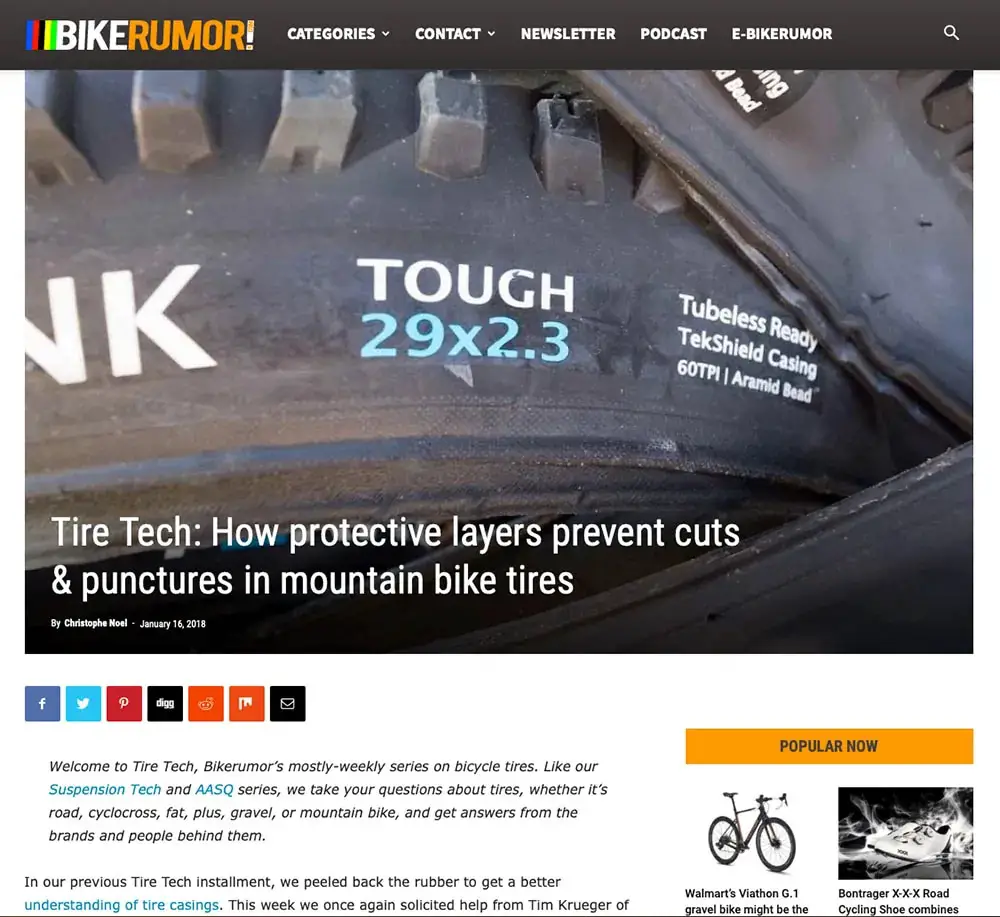
While this is sponsored content, it still gives general information on “how protective layers prevent cuts and punctures in mountain bike tires.” This type of information is relevant to the cyclists and also allows the brand an opportunity to partner with the publisher. Together, they tell a story and provide answers on the topic.
How to do it yourself: Think of a series of articles that may discuss how to do something or highlight a task or subject that could involve a product. Then, create these topics and save them as a “product” that you earmark for a shortlist of brands. Reach out to these brands directly through email, social media, or at a conference and show them how the piece is ready and waiting for their sponsorship.
- The reader’s value: Gets to read relevant information on topics that affect them.
- The brand’s value: The brand gets to provide insight and answers on a specific topic while giving the reader context that their brand sponsored the content. More often than not, their product or service might provide value to the reader since they are a part of the same niche. They may also reap lots of continued organic exposure in the future as the content ranks in search.
- The publisher: Gets paid to publish content they were going to publish anyway.
4. Destination marketing for brands
Bikerumor created a “Where to Ride” series. Often they will tie in a tourism board or a destination marketing organization.
They typically take the approach of finding destinations where they want to ride. Then, they email a bunch of tourism boards and destination marketing organizations until a brand agrees to partner.

Bikerumor has successfully replicated this type of sponsored content in stateside destinations like Tennessee, Nevada, and countries abroad like Italy, Scotland, and Croatia.
How to do this yourself: Look into potential locations or municipalities that may have an interest in your audience or content. Then, conduct some initial outreach and consider what your content offering could bring to them. Typically, they are looking for tourism or initiative support (Baltimore invested a lot of money in MLK Day several years ago). Often, like in the case of Baltimore, these have little to do with the location and a lot more to do with a cause. There are often budgets that are already earmarked for this kind of stuff.
- The reader’s value: The readers see this as an attainable adventure. Bikerumor shows the reader how to do it, where to go, and how to plan the trip ahead of time.
- The brand’s value: The brand/municipality gets product placement and implied endorsement because the publisher is using the brand’s product to create this adventure.
- The publisher: Gets paid, plus a free trip (Tyler from BikeRumor admitted he would do these personally oftentimes just for the vacation).
If your niche applies to different regional, national, and international destinations, this type of sponsored content might both be exciting and beneficial to your readers.
How do you get brands to buy sponsored content on your site?
Tyler, from BikeRumor, makes the act of selling sponsored content to brands seem all too easy. After all, the coveted direct brand sale is something most publishers and websites want but are often unable to secure — even when they have a direct sales team.

Tyler mentioned, and I’ll tell you personally as a marketer, almost no brands will directly reach out to 99% of websites requesting branded content. While there may be some sketchy advertisers looking to buy backlinks from you under the guise of sponsoring content or trying to get you to republish the same old branded content they’ve gotten a thousand other website to publish, the vast majority of real advertisers are dumping large budgets into Google and Facebook and relying on agencies or internal teams to turn them onto unique opportunities like I’ve outlined above.
Should I hire a salesperson/team (what if we can’t afford that)?
Maybe. No? Yes?
Before you say you can’t afford it, consider these two things…
- BikeRumor mentioned his sales team is 100% commission-only
- If you’ve never made a sale, you don’t know the ROI (you might be losing money every day you’re not paying someone…)
There are a lot of models that can potentially work, but it really starts with understanding what you could potentially offer brands and how many there are that might be a good target. Test piloting a sales process will likely tell you a lot about what you can afford or what would make sense for a sales professional to do. This can be done with interns, your existing staff, or by paying someone a small amount to simply test this process out for you.
How does a website do advertiser outreach that works?
Targeting and packaging. Know what it is you’re selling and what they would get our of your “product”.
As a marketer, I am not interested in buying sponsored content from any websites… however, as the CMO of Ezoic, I am potentially interested in sponsoring the DigiDay WTF series, “WTF is an end-to-end publishing platform“. Their WTF is well thought of by their audience and they could show me how many readers hit it, how their organic traffic to those pages has grown over time, and what types of results I might be able to expect as an advertiser in this scenario.
Having a defined product and some metrics allows me to have a much better idea of what I’m buying as an advertiser. Sponsored content could be junk, but seeing the data and the actual series itself helps me quickly see that it would be worth a trial investment.
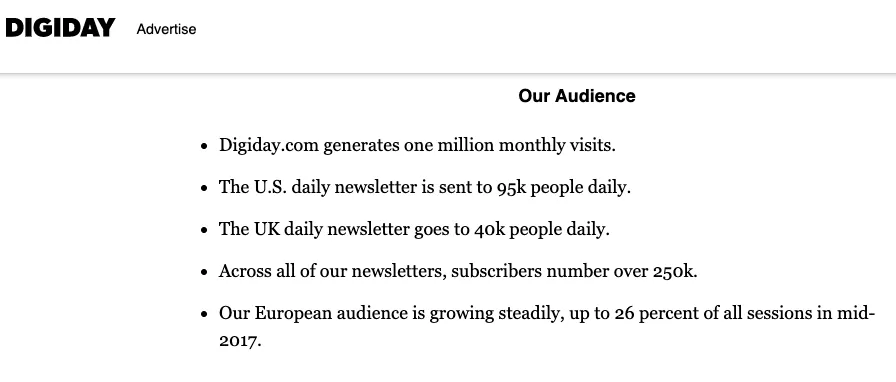
Is there anything else to remember about sponsored content?
Ultimately with sponsored content, you want to think about where can your audience’s interests intersect with the brand’s interests.

When you can find that intersection point, then you give yourself the ability to create content that you can sell to brands. With this type of formula for sponsored content, you can become the source of that information, entertainment, or new learning opportunities for your audience.
If you merge all of these interests, everybody wins. If one of these three interests is missing, the sponsored content will probably fall flat or worse; your readers will dislike it because it screams “advertorial” and not content that’s useful to them.
Do you have any questions on sponsored content? Let me know in the comments, and I’ll answer them.
